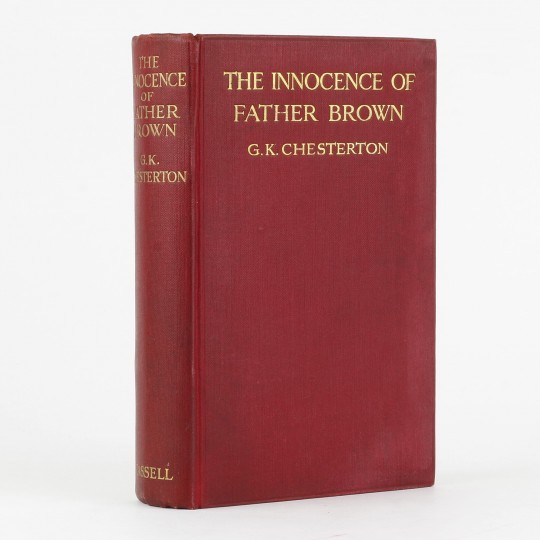
Nonetheless, the seeds for the Golden Age are clearly here, and it’s easy to see how Chesterton preempted (or even created) many of the elements of what would become the “fairplay” detective novel half a decade before its formal existence. Often times, Father Brown solves the crimes through information hitherto unbeknownst to the reader, thought processes that sometimes don’t even begin to approach rational or concrete (in one story, Brown argues that a man is innocent of a theft merely because he is a Socialist!), or simply divining the answer from mid-air.

However, though The Innocence of Father Brown can be seen flirting with a kind of plotting that would go on to dominate the puzzle plots of the 1920s to 40s, it cannot be said that the notion of “fairplay” has actually yet fully formed. Chesterton that the purely naturalistic, rational mysteries of the 19th century would slowly become replaced with imaginative plotters and clever criminals. Tricky plots and multi-layered misdirection started to replace basic criminal precaution, foreshadowing became more salient, and the “impossible crimes” began to mature past their pre-Golden Age crudeness - it is thanks to G.

Chesterton was one of the first authors whose stories started to show the seeds of the style of plotting the Golden Age of Crime Fiction came to be known for. Chesterton’s writing inspiring crime writers all the world over, from slivers of Chestertonian plotting in Agatha Christie’s Death in the Clouds to entire series inspired by Father Brown’s exploits in Japan’s A Aiichirou, he’s an author who almost needs no introduction.Īs one of the founding members of the Detection Club, as well as its first president, G. To refer to a plot-point as “Chestertonian” is a term so ubiquitous that even someone who has never read his works understands the paradox of hiding something without really hiding it at all - clues snuggled neatly in the boundary between information which isn’t explicitly made known and information which certainly must exist. Chesterton’s mystery writings featuring the crime-solving parish priest Father Brown stand today as some of the most influential in the entire history of genre.


 0 kommentar(er)
0 kommentar(er)
